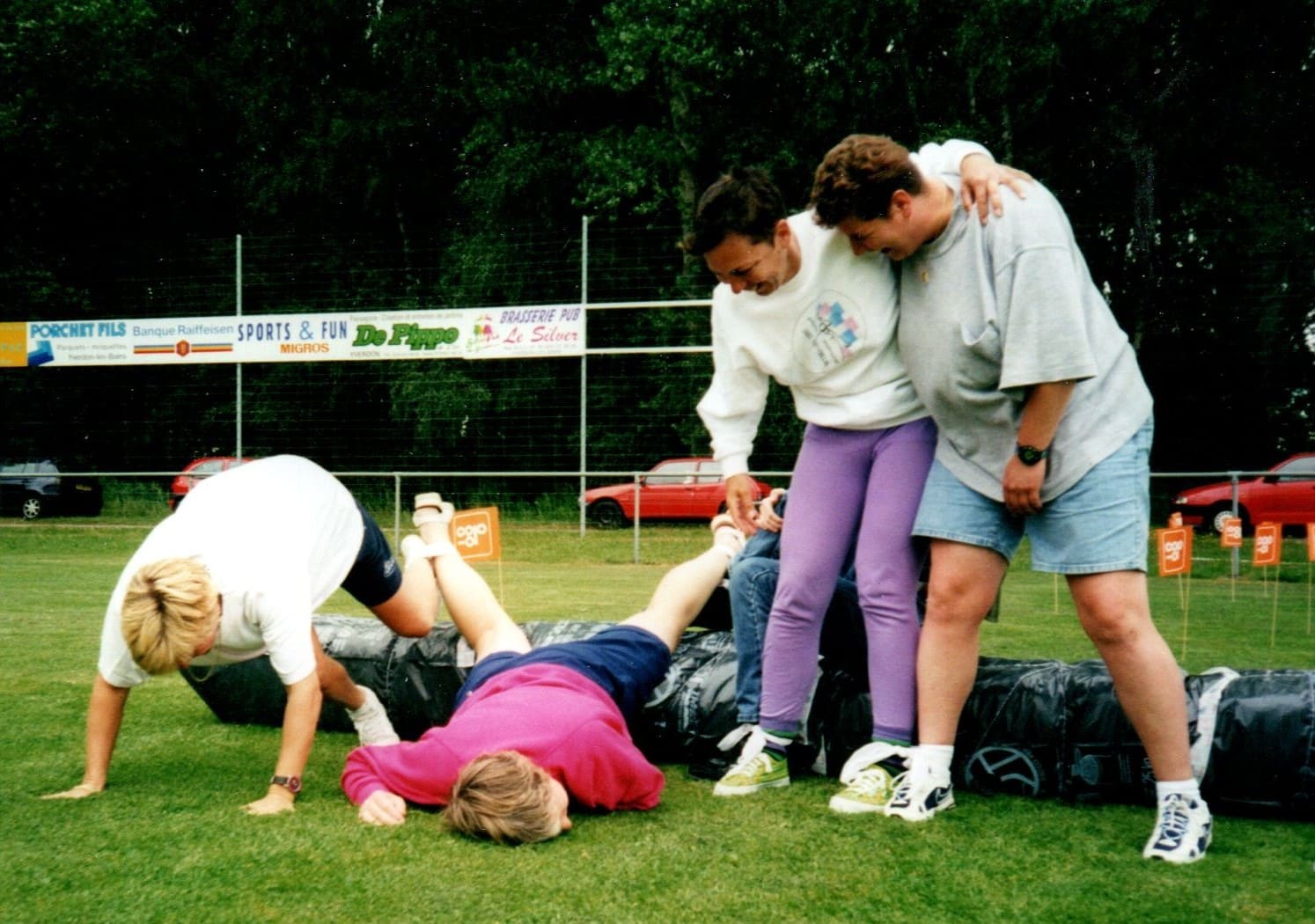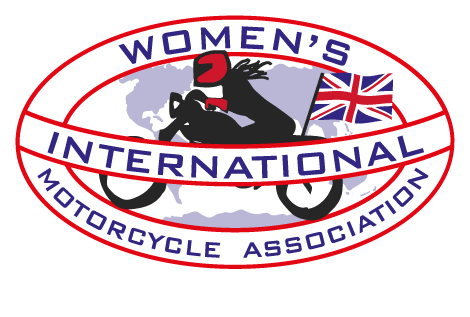
As many of you will know, I am updating WIMA’s history. Frances Popley, who sadly is no longer with us, wrote the first history, which was known as the Pearl Booklet and was published in 1980. Several of you will still have your copies and for those of you without one, it’s available in PDF form on the GB website: https://www.wimagb.co.uk/aboutus/heritage/
The lifeblood of WIMA is its rallies and get togethers, both national and international. With both our National and the International Rally cancelled this year due to Covid-19, we can only hope that these events will be able to happen again in 2021.
I’m particularly sad at the cancellation of the International rally in Germany this year as it is the 70th anniversary of WIMA’s founding. It would have been my 39th rally (my first was in 1983) and Pat’s and my 25th anniversary (we got together in 1995 at the Swedish rally).
In the History update, I am aiming to have an entire section devoted to all the International Rallies held since 1958 and I’m gathering information from many sources. But I have huge gaps – so if any of you can let me know if you have photos (print or digital) from International rallies you have attended – that would be great. I’m particularly looking for photos that show specific activities which have been many and varied over the years. Pls email me Sheonagh. I’m already very grateful to Widge Thorpe, Sheila Whittingham, Ann Weir and Ali Cameron (remember her?) for their help.
The early International Rallies were known as Continental Rallies – can anybody tell me the year this changed to the International Rally? And the early rallies were very competitive – much more so than today, where the emphasis is very much more on social fun with some competitions thrown in.

Here is the report from the very first Rally held in 1958 in the Netherlands – taken from Frances Popley’s original booklet:
“The Continental Division of WIMA is less of an organised Association than its British counterpart, it has no regular Newsletters or small gatherings. However it has an annual rally to which members from all over Europe flock. This rally usually lasts a whole week and encompasses a wide variety of riding competitions and social activities.
The first such rally was held in Holland in July 1958. The following is an account of the event reprinted from ‘Das Motorrad’.
‘It was the Dutch who hit upon the idea of organising a motorcycle rally for women – and what a suggestion it turned out to be!
Five trophies, donated by Louise Scherbyn, stood proudly in the boarding house in Scheveningen where the nine girls who had come for the first European WIMA meeting, were staying. About fifteen girls had said they were coming, from Holland, France, Switzerland, Germany, England, Austria and Czechoslovakia. Unfortunately, the Czech girl was not given an exit visa, neither was the woman from East Germany!
The nine who did attend were:-
- Mrs Jopy Deijs-van Dinter from Rijwijk on a Velocette Venom 500;
- Mrs Jenny Steenbeeke-van Dinter from The Hague on a Javva 350;
- Mrs Willy Pabon-Liebers from Amsterdam on a Puch 150;
- Mrs Han Clavan-Selder from Schevenirgen on a Jawa 250;
- Miss Ellen Wetzig from Frankfurt on a Horex Resident 350;
- Miss Anke-Eva Goldman from Wiesbaden on a BMW R69 600;
- Miss Marleen Lutz from Mannheim on a BMW R51/2 500 with sidecar;
- Mrs Juliette Steiner from Yverdon (Switzerland) on a BMW R50 500;
- Miss Barbara Batt from Sellidge (England) on an AJS 16 MS 350.
Jopy was the initiator of the rally. She is trying to set up a European section of WIMA with regular meetings and competitions. Jenny is her younger sister. Their father (Piet van Dinter) used to race on sandtracks in the 1930’s. The whole Dinter family, including the sons-in-law, is totally mad about motorcycles.
Han is in her forties and the mother of two teenage children and acted as hostess to the ralliests. All the participants stayed in her boarding house, which also acted as the Headquarters for some of the events. Juliette is a well-known motorcyclist and ralliest in Switzerland.
Barbara, who always had a cigarette in her mouth, had left home two years previously, to do a short tour on her AJS, from Canada to California, then on to Texas and Mexico, returning to Texas and finally to New York and back. About 27,000 in five months. At the end of her journey she had no money left and so approached an airline company for a free flight for herself and her AJS. Three days later she received a free ticket! She went to Holland for the Rally.
Anke-Eva, who had only been riding for a year, arrived a few days later. She is a teacher and could not get away any earlier. She was riding the heaviest machine but managed it very well. Marleen rode her father’s cross-country sidecar. She is only sixteen years old.
The first competition was on July 15th – a trial at Aruheim on 125cc DKWs. This proved great fun and produced a clear win for Ellen from Frankfurt. Ellen has been riding for years both on and off road (remember her from the Horex rally where she did 400km in one week?). Barbara was second in her wonderful English trials style.
The next competition was an orienteering run. Because of confusion over languages the usual descriptive text was abandoned for a picture book approach devised by the Dutch. It was pouring with rain but an undaunted Barbara won the event ahead of the experienced Dutch girls, Jopy, Willy and Jenny.
On the 18th, two braking and acceleration tests were held on the race track at Zandvoort. Barbara won this too. Marleen managed the outfit very well here considering she had no front brake – her father did not believe in using one! After the tests a training session was held in preparation for the ladies race the following Sunday. The most exciting of these sessions was one for the 350’s – Jenny, Ellen and Barbara. Jenny and Ellen tussled for the lead – first one ahead and then the other. In the end Ellen won by about 100 metres. They both finished and burst out laughing. Poor Barbara’s AJS just wasn’t in the running even though she had been lying flat on the tank so in the evening she rushed around looking for larger main jets. In five minutes she had stripped down the carburettor and had it back together again.
On the 19th no events took place. Instead, the girls were able to enjoy a sightseeing tour of Gouda. In the evening they went to a clubhouse where Juliette was awarded the long distance trophy for travelling the furthest to the rally.
The road race was to have been held on the 20th, but it was called off at the last minute. Nevertheless credit must certainly go to the Dutch who had the courage to organise a Ladies’ Race on a public track. In the morning there was more training. First the men’s 125 and 250, and then the women’s. They all looked rather pale and were getting nervous. As they pushed their machines onto the track it began to rain, by the time the engines were all running a steady downpour had set in. The organisers decided to call a halt to all racing for the day, not just the Ladies’ Race. People had mixed feelings about this decision. Admittedly the Zandvoort track is tricky even under dry conditions. Probably the organisers were frightened to take the responsibility of allowing girls onto the treacherous track in a storm. In any case, it was a great shame. The cancellation of the race also caused mathematical problems. It was decided to count the times clocked on the 18th in practice. Obviously this was not ideal but seemed the best solution.
That evening the winner was announced as Barbara Batt on her AJS. She had now won three of the five competitions and was undoubtedly the best rider at the meeting. There was also the incredible achievement of Han on her Jawa. She had averaged over 80km/h! The sixteen year old Marleen on her outfit managed to beat a few others with an average speed of 71km/h. Apart from no front brake she didn’t even have a licence!
The Rally ended on July 21st, Barbara packed her trophy carefully into a cardboard box and strapped it to her carrier. All of the girls looked forward to meeting up again the next year.’
Frances says, “This tradition started by the Dutch is now a firmly established and very popular part of the WIMA scene. Each year the Rally is held in a different country and is usually well-reported in ‘Das Motorrad’ in Germany and ‘Motorevue’ in France”
Right now – is anybody into historical detective work? Is Barbara Batt still alive? The report says she comes from Sellidge but google only comes up with Sellindge in Kent. Can we find her? Does she have any photos from that rally? Over to you!
First published in WIMA GB News July 2020
